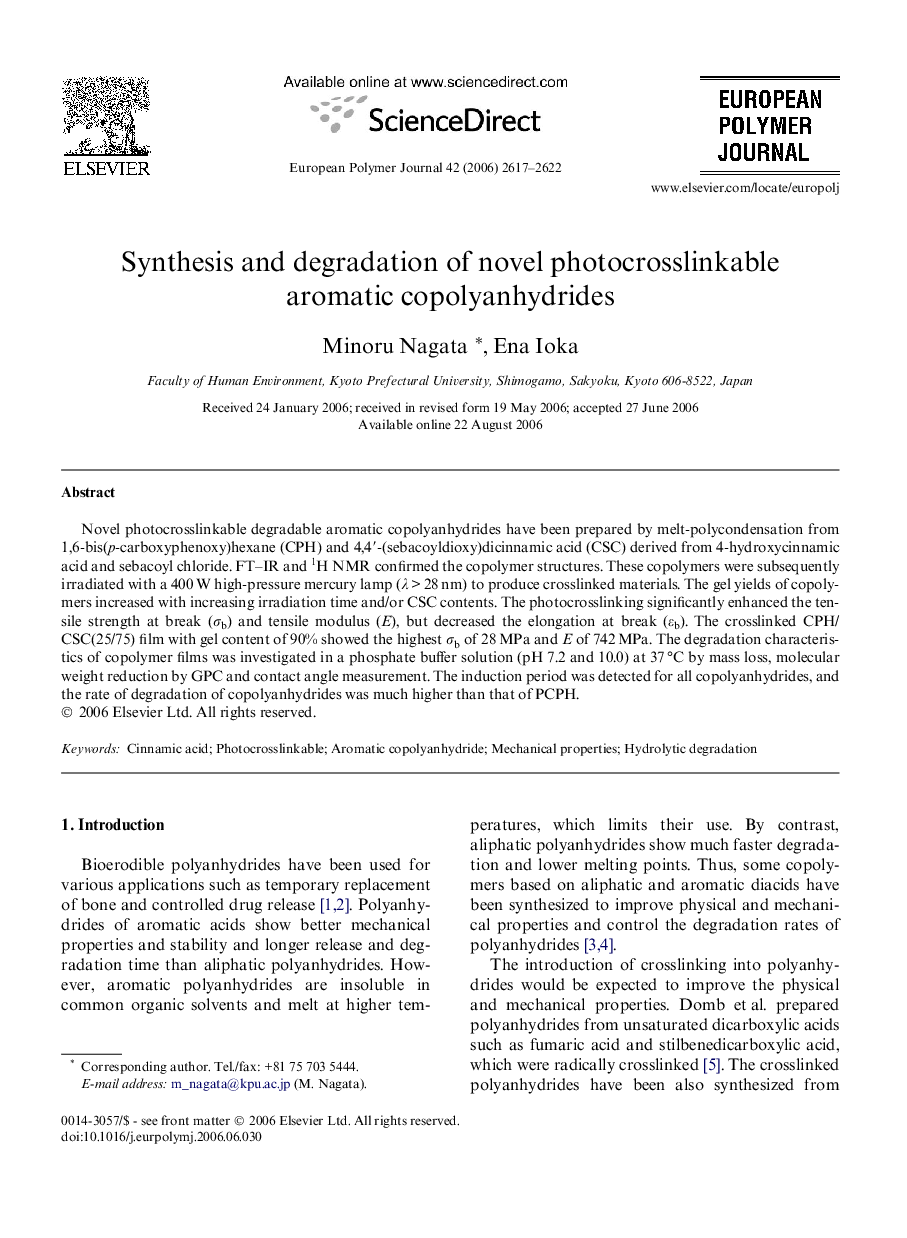| Article ID | Journal | Published Year | Pages | File Type |
|---|---|---|---|---|
| 1400276 | European Polymer Journal | 2006 | 6 Pages |
Novel photocrosslinkable degradable aromatic copolyanhydrides have been prepared by melt-polycondensation from 1,6-bis(p-carboxyphenoxy)hexane (CPH) and 4,4′-(sebacoyldioxy)dicinnamic acid (CSC) derived from 4-hydroxycinnamic acid and sebacoyl chloride. FT–IR and 1H NMR confirmed the copolymer structures. These copolymers were subsequently irradiated with a 400 W high-pressure mercury lamp (λ > 28 nm) to produce crosslinked materials. The gel yields of copolymers increased with increasing irradiation time and/or CSC contents. The photocrosslinking significantly enhanced the tensile strength at break (σb) and tensile modulus (E), but decreased the elongation at break (εb). The crosslinked CPH/CSC(25/75) film with gel content of 90% showed the highest σb of 28 MPa and E of 742 MPa. The degradation characteristics of copolymer films was investigated in a phosphate buffer solution (pH 7.2 and 10.0) at 37 °C by mass loss, molecular weight reduction by GPC and contact angle measurement. The induction period was detected for all copolyanhydrides, and the rate of degradation of copolyanhydrides was much higher than that of PCPH.
